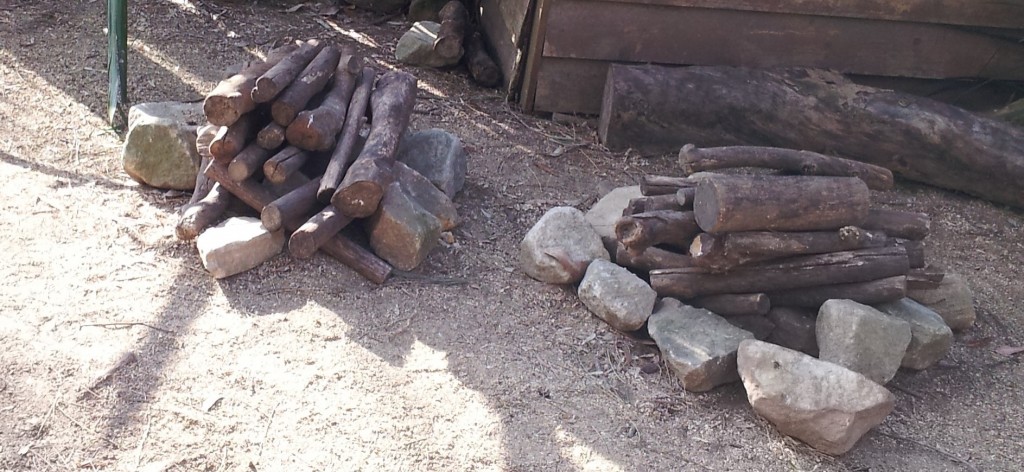21 / 3 / 17

Children are eternally fascinated by fire; it is a deep instinct that drives children to want to know more about it; to stare fixedly at it, to guess its power. It is part magic!
A fireplace should be part of every young child’s outdoor experience, and just a small circle of ‘lucky stones’ will effortlessly spark imaginary furnaces of fun.

The fireplace experience can be supplemented by a nearby collection of special fire-sticks: sticks that are blackened, have rounded tips, and are larger than twigs, and smaller than logs. This in-between stick size is harder to use against other children.
The ultimate imaginary fire can be fuelled with the remarkable flaky bark of the Persoonia levis shrub, native to Sydney. The flaky bark is ever shade of fire, and when gently picked off the trunk of the bush, it looks just like flames of fire!
So the ultimate pretend fire kit:
- large lucky stones – say 5 – placed in a ring,
- some charcoal lumps placed in the ring,
- Persoonia ‘fire’ flakes, and
- blackened sticks.
Voila! You have an imaginary fire.
Why is it important for young children to experiment with and test the idea of fire?
We have to change the basis of our agreement with children and honour their curiosity and competence. They need to experiment with and test their understanding of natural and dangerous phenomena like fire. Small moments of exploratory and honest play with even a pretend fire will legitimise its fascination, and allow the child to externalise their thoughts and extend their understanding of it. Conversations can build knowledge: play can allow experimentation. These children do not become the future illicit ‘fire bugs’ of society: they become resilient and responsible adults, because they explored fascinating ideas, and were supported in doing so.